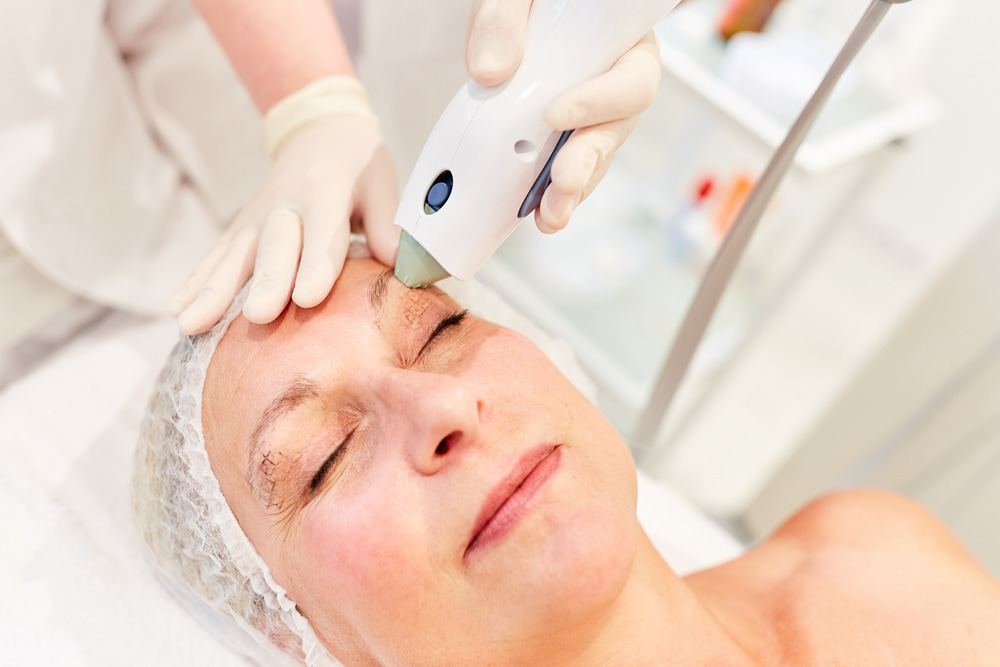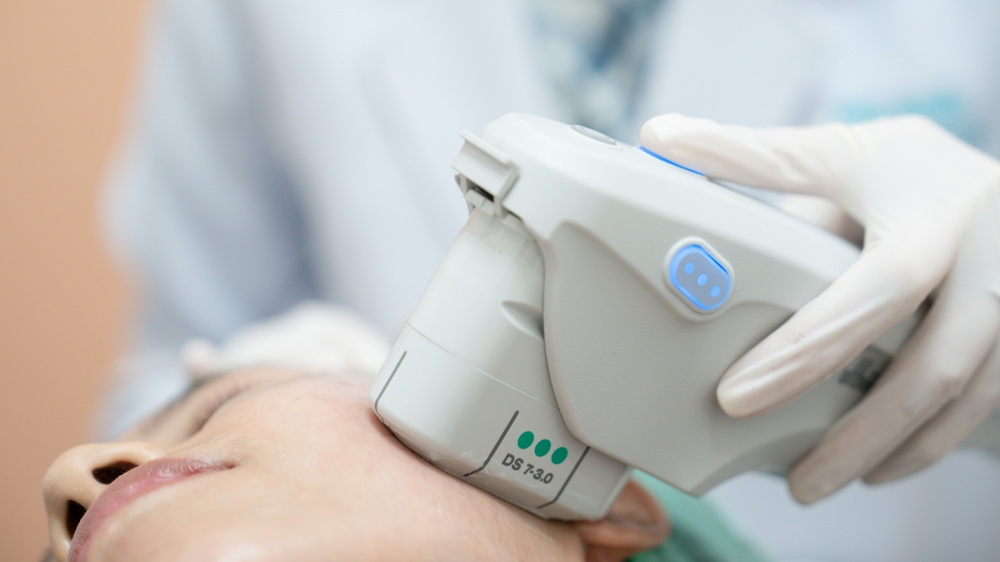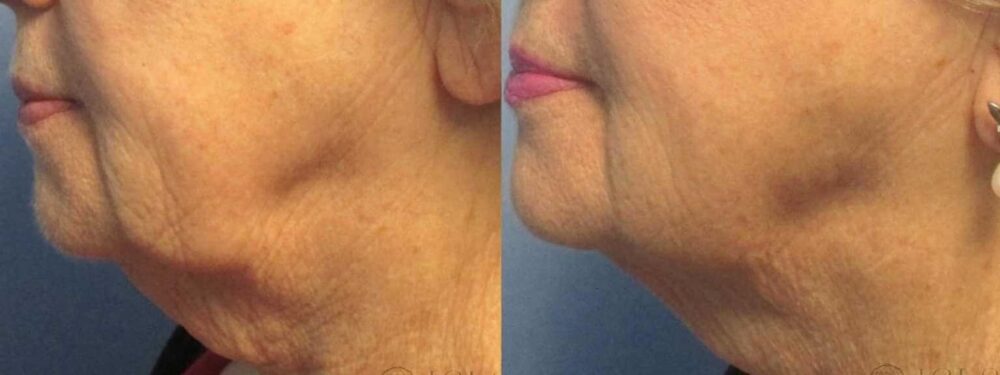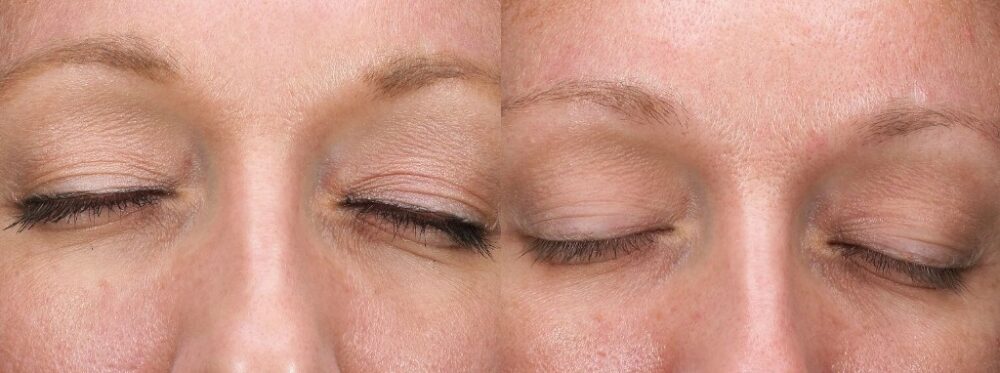
As you age, your skin loses collagen and elastin, which leads to noticeable sagging and drooping. Many patients seeking skin-tightening treatments seek minimally invasive procedures with minimal downtime. Those not yet wanting a surgical facelift or other treatment can explore the wide range of options available today, including Thermage and Ultherapy. These two popular treatments can tighten skin, minimize the appearance of fine lines, and give you a rejuvenated appearance that looks completely natural. This post will explore Thermage vs. Ultherapy, including how each treatment works, the details of each procedure, and what to expect during recovery.
What Is Thermage and How Does It Work?

Thermage is an FDA-approved non-surgical procedure that tightens and smooths skin using radiofrequency energy to stimulate collagen production. Thermage RF energy first moves into the skin, which affects the outer layer before moving inward. It can effectively treat the outer layer of the skin while promoting deeper rejuvenation below the surface.
New collagen lifts the skin and provides a naturally tight, youthful appearance without the need for sutures or threads. Meanwhile, Thermage also helps enhance the skin’s surface to leave you looking more rejuvenated. Thermage can contour and lift loose skin without the need for any injections, threads, or sutures. It works three-dimensionally to contract existing collagen proteins and promote new collagen production.
What Is Ultherapy and How Does It Work?

Ultherapy is a non-surgical treatment that uses ultrasound energy to stimulate collagen production below the skin’s surface. It is ideal for targeting smaller areas of the face and reaching deep layers of the skin to promote maximum rejuvenation.
Ultherapy is an FDA-cleared, non-invasive skin-tightening treatment used to target skin layers beyond the surface. Thanks to micro-focused ultrasound with visualization (MFU-V), it can reach the same depths as plastic surgeons without ever making a single incision on your skin.
For patients looking to address sagging jowls, crepey skin, and moderate skin sagging, Ultherapy can offer effective rejuvenation by reaching into deeper skin tissues. As it promotes new collagen and elastin fibres, the skin will begin to lift and tighten.
Combining Ultherapy and Thermage: A Synergistic Approach
While our blog explores the individual benefits of Ultherapy and Thermage, it’s important to highlight that we often combine these treatments in a single session to maximize results at our clinic. This synergistic approach allows us to harness the distinct advantages of both Ultherapy’s deep tissue rejuvenation and Thermage’s surface skin tightening.
By applying Ultherapy, we target deeper layers of the skin to lift and tighten from within, which is especially effective for more pronounced sagging around the jowls, brow line, and neck. In the same session, Thermage is used to refine and smooth the surface, enhancing skin texture and elasticity, particularly effective in areas like the face and abdomen.
This combined treatment is designed to provide a comprehensive rejuvenation effect, offering immediate and progressive skin tightness and structure improvements. Our clients appreciate the efficiency of receiving dual benefits in one appointment, making this a popular choice for those seeking a non-invasive yet thorough approach to anti-aging.
Patients interested in exploring how these combined treatments can be tailored to their specific needs are encouraged to consult with our team. This personalized approach ensures we align with your aesthetic goals, delivering a natural and youthful appearance with minimal downtime.
Thermage vs. Ultherapy
Technology
Thermage uses radiofrequency (RF) energy to stimulate collagen production, which can improve mild to moderate skin laxity and promote contouring and tightening of both the outer and deeper layers of the skin. It is suitable for the face and large areas such as the thighs and abdominal area.
Ultherapy uses ultrasound technology to penetrate deeper layers of skin and address moderate skin laxity. It is an accurate skin regeneration treatment for patients who want to target specific areas, such as the brow line, chin, or neck.
Treatment Areas
Both Thermage and Ultherapy can target mild to moderate skin laxity across the face and body. However, Ultherapy may be more effective for targeting the brow line and jowls because of its deeper penetration rate.
When it comes to Thermage vs. Ultherapy for eyes, Thermage is often used to treat the under-eye area and target soft wrinkles such as crow’s feet; Ultherapy can be used on the outer orbital area and tighten the brows for enhanced lift. Both procedures are excellent at targeting the neck, but Ultherapy may deliver more dramatic results because it reaches deeper into the skin to promote new collagen and elastin fibres.
Thermage also has the advantage of being able to treat larger areas with no downtime. This makes it effective for patients who want more substantial rejuvenation in a larger area but do not want to undergo invasive procedures.
Procedure Time and Pain
Thermage: Treatment sessions last 30 to 90 minutes and include minimal pain. Most patients experience a warm sensation, but there is limited discomfort. Your provider may also apply a topical anesthetic to numb the area before treatment.
Ultherapy: Treatment sessions range from 30 to 90 minutes; mild discomfort is possible with ultrasound therapy, but most patients tolerate Ultherapy well with no negative side effects. There are possible pain management options to explore, such as a topical anesthetic before treatment and cooling devices.
Neither Thermage or Ultherapy are significantly painful. They may cause mild discomfort in some patients, but they are reported to be highly tolerable with no lingering pain after treatment.
Results and Recovery
What can you expect after Thermage or Ultherapy? Both treatments are prized for having no downtime. There are no incisions required during treatment, so there are no sutures to worry about afterward. You can resume your usual daily activities after your sessions. There may be some mild redness or swelling, which should resolve naturally within a few hours. Ultherapy can induce some light bruising.
Below, you can see before and after Ultherapy treatment.

After Thermage or Ultherapy, you should avoid heat, sun exposure, saunas, and touching or rubbing the treated areas for 2-3 days. Some doctors also advise not taking any anti-inflammatory drugs, such as Advil or Ibuprofen, for a short period of time to avoid disrupting the collagen formation process.
While outdoors, you should wear sunscreen with an SPF of 30 or higher to protect your skin. When cleansing your face or treatment site, avoid harsh skin care products with retinoids and AHAs that may irritate your skin. Gentle, unscented products are best during the first few days to promote healing.
Results from Thermage can take up to six months to fully develop, while Ultherapy results often peak between 2-3 months post-treatment. Results can last from 1-2 years, depending on factors such as your age, treatment area, and the number of sessions you had.
Below, you can view the before and after results of Thermage skin tightening.

Patients who have more skin laxity and a history of sun exposure may require additional treatments to achieve optimal results. Furthermore, areas with thicker skin (like the jaw and neck) tend to hold results longer than those with delicate skin (such as the eyes).
Ultherapy vs. Thermage Cost Comparison
When combined at ICLS, Face/Submental Thermage and Ulthera begin at $3,675. When done separately, the costs vary depending on the area being treated. Because Ultherapy can last longer than Thermage without follow-up treatments, it may be a better investment in the long-term for patients with moderate skin laxity. However, depending on the treatment area in question, you may find Thermage delivers better results over the course of several sessions.
Remember that neither Ultherapy or Thermage are permanent. You will need to eventually repeat treatments if you want to maintain your results. However, the follow-up time is typically longer for patients who undergo Ultherapy treatment, and it tends to require fewer follow-ups than Thermage.
Be sure to consider your unique situation and consult with a skincare expert who can help you make the most informed decision. They can help you explore the possible benefits of Ultherapy and Thermage depending on your age, skin texture, skin laxity, desired treatment area, and expected results.
Ideal Candidates
Patients for Ultherapy and Thermage are adults who are experiencing mild to moderate skin laxity or a noticeable loss of tightness around their face or some body parts. Ultherapy is intended for patients with moderate laxity who wish to tighten and lift the face, predominately the brow area, jowls, and neck.
Thermage is best suited for candidates who wish to smooth and lift the skin at the treatment area. It can be used to address skin concerns on the face and other parts of the body, such as the neck, thighs, and abdomen. Thermage is more suitable for candidates who are focused on texture and laxity, whereas Ultherapy concentrates on improving lift and definition.
Candidates for either procedure should be in good general health, not have any underlying skin conditions, and have realistic expectations about what the procedures can achieve.
Contraindications
Patients who should not receive Ultherapy or Thermage are those who are pregnant or breastfeeding, people who are immunocompromised, anyone with cystic acne or open wounds at the treatment area, patients with autoimmune or connective tissue disorders, people with an active infection, and anyone taking certain medications, including anti-inflammatories.
Thermage should also not be performed on people with congestive heart disease, epilepsy, diabetes, and other neurological conditions, or an active implant (such as a pacemaker) at the treatment site.
Potential Side Effects and Downtime
Thermage and Ultherapy do not have downtime or significant side effects. However, you may experience redness and swelling at the treatment site for 24 hours after treatment. Some patients who undergo Ultherapy also experience mild bruising.
The swelling and tenderness after treatment typically resolves within a few days. Ultherapy side effects can appear right away or within the first 24 hours after treatment.
Both procedures can be completed in the office in under 2 hours, and you can return to work the same day. However, there are some additional steps you will need to take to protect your skin.
Common aftercare instructions for Thermage and Ultherapy include:
- Avoid sun exposure for at least two weeks after Ultherapy; for Thermage, wear a broad-spectrum SPF 30+ sunscreen when outdoors.
- Avoid strenuous physical exercise, saunas, and hot tubs for at least two days after Ultherapy. With Thermage, take cool, lukewarm showers.
- Avoid harsh skincare products that could clog or irritate the skin for at least a week.
- Use a cooling sheet mask instead of an ice pack to protect your results.
- Sleep propped up for 2-3 days to allow an anesthetic to drain and minimize swelling.
It’s always important to have a lengthy conversation with your provider to ensure your aftercare results are personalized.
Thermage or Ultherapy: Which One to Choose?
Ultimately, the decision between Thermage and Ultherapy depends on your age, budget, level of skin laxity, and desired results. The best way to find the right treatment is to consult with an experienced, licensed provider who can help you make the best choice. Review before and after photos of previous patients they have treated, and work with them to find the right treatment for your specific needs.
FAQs
Is it possible to combine Thermage and Ultherapy treatments?
Yes, Ultherapy and Thermage can be used together to tighten sagging skin. We recommend this! Thermage is a contouring treatment, while Ultherapy reaches deeper into the skin for a greater lift and more collagen growth. For some patients, combining both treatments may yield the best results, but it’s important to consult with an experienced provider to ensure you receive the best treatment timeline for your goals.
What depth within the skin does Thermage and Ultherapy reach?
Thermage treatment can extend from the epidermis to the subcutaneous fat layer 1.5–3 mm into the skin. Ultherapy can travel deeper into a layer of subcutaneous tissue called the SMAS fascia, reaching 1.5, 3.5, or 4.5 mm below the skin’s surface depending on the patient’s needs.
Both treatments are FDA-approved to tighten loose skin, but patients with moderate anxiety may find greater results through Ultherapy. Thermage is more adept at correcting superficial lines and wrinkles, tightening, and toning the skin, whereas Ultherapy can offer a much more substantial lift by reaching deeper layers of the skin to promote collagen and elastin growth.
